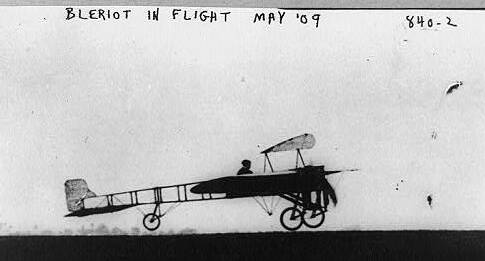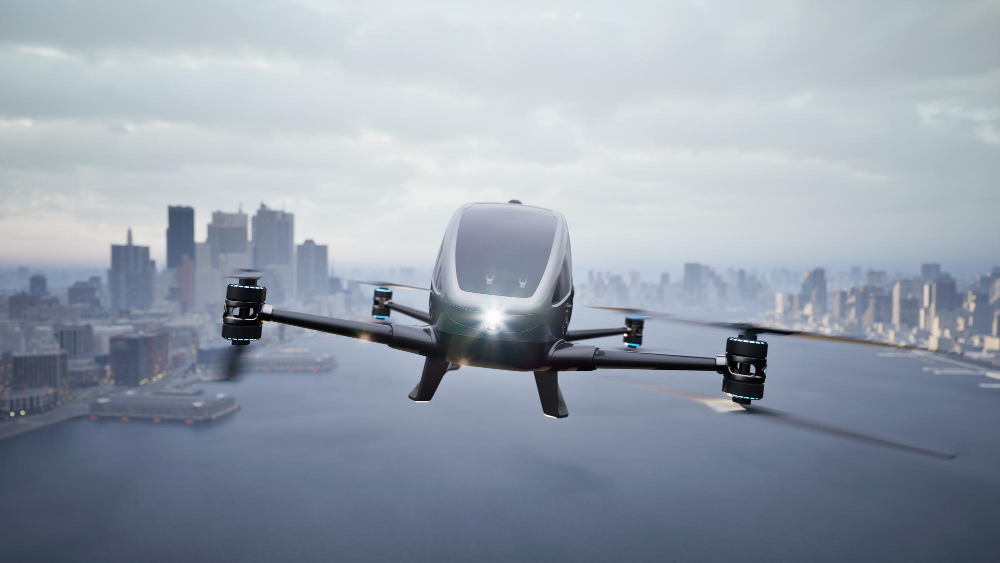"The use of airspace by aircraft is free".

For 100 years now, this sentence has characterized Article 1 of the Air Traffic Act. A lot has changed in that time. Whereas aviation was still in its infancy in 1922, 100 years later it is the kerosene of globalization and transports over 1 billion passengers a year* in the EU alone.
But let's jump back to the origins of the Air Traffic Act. 20 years before the law came into force, the Wright Brothers were the first to fly an aircraft that could be controlled on all three axes.
In 1909, Louis Blériot became the first pilot to cross the English Channel in his aircraft Blériot XI. The crossing was celebrated. Crowds of onlookers flock to this and similar events. The enthusiasm for aviation is ignited. His own aircraft design, which Blériot uses for the crossing, subsequently sells around 800 copies. This makes him one of the first commercial aircraft manufacturers in the world.
Even at these first events, it is obvious that some specifications are needed to ensure safe flight operations. After all, it is not unusual for the police to provide the pioneers of the skies with the necessary clearance to take off or land. And so it doesn't take long for those responsible to establish fixed spectator areas, predefined approach corridors and specifications for safety distances. In addition, there are practical elements such as fixed parking areas, restaurants and sales booths. With the air shows of that time, the idea of the airport of today is born at an early stage.
The ambitious pilots already need a pilot's license for the air shows in 1910. The acquisition of such a license is certainly not comparable to today's effort for license candidates, but it has to be assured at an early stage that the non-trivial control of an aircraft is only granted to suitable persons. The First World War accelerated the development of aircraft, and so mature and powerful aircraft crossed the Atlantic as early as 1919.
Air traffic is becoming increasingly international, making transnational regulation of aviation necessary at an early stage. In the same year as the Atlantic crossing, the Paris Air Transport Agreement lays the foundation for international regulations, which will also be used as a basis by ICAO 25 years later.
The first airlines inspire the Golden Twenties, during which air traffic increases rapidly and is from this time on controlled and provided with weather information at many airfields.
National regulations are also implemented step by step in legislation. In Germany, the Air Traffic Act became the central source of legislation for aviation on August 1, 1922, exactly 100 years ago when this article was published, and came into force around a year later. It contains regulations for aircraft, pilots, airports, airlines, aviation events, conduct in traffic and liability.
The latter is uniformly regulated on the international stage in the Warsaw Convention of October 1929. In hardly any other industry efforts for harmonization are as formative as in aviation, and thus numerous national and international organizations are advancing civil aviation with their efforts.
Two of the most important organizations for Europe are ICAO and EASA. ICAO was founded in 1944 as a branch of the UN and, with its SARPs (Standards And Recommended Practices), provides specifications and recommendations that are still of far-reaching importance for the standardization of international aviation today. Before the founding of EASA in 2002 this process was accelerated at the European level, boosted by the further development of jet engine in particular for air traffic and enabled journeys around the world with up to now more than 500 passengers in an Airbus A380. More efficient aircraft and deregulated framework conditions subsequently open up completely new opportunities. The fascination of flying becomes the norm.
"100 years after the original version, the first sentence of Article 1 of the Air Traffic Act still states: "The use of airspace by aircraft is free. In the meantime, this passage has been restricted not only by national law, but also, by continueing reading the Article 1 today, by "international law applicable domestically, by legal acts of the European Union and the legal provisions enacted for their implementation.
For airports, airlines or authorities, new mandatory EASA requirements in particular can lead to noticeable efforts. Today, EASA requires, for example, comprehensive management systems, training concepts for employees, precisely elaborated processes for the handling of aircraft, or an infrastructure that conforms to specifications. This increases safety, but also the efforts required.
The development of aviation is progressing independently of these specifications. New ways of moving with battery-powered drones or the transport of passengers without pilots are the beginning of the next, hopefully similarly fascinating 100 years of air traffic. The question of whether the beginning of Article 1 of the Air Traffic Act will also survive the flight into the next century unscathed is one that everyone may answer for themselves.
We at AviaCert will be happy to answer your questions about the current EASA requirements. With more than two decades of aviation experience in interdisciplinary teams, the core competencies of AviaCert GmbH lie in the areas of aviation law, compliance and certification, operational flight safety as well as training and qualification. On behalf of authorities, companies and institutions, AviaCert verifies compliance with relevant aviation law requirements and manages complex approval and certification procedures.

